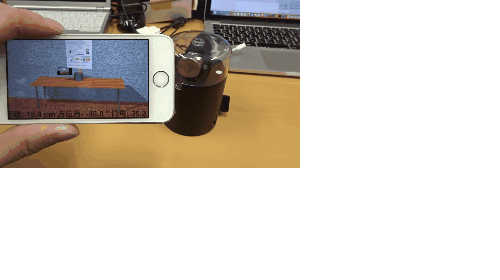Context Estimation
TOC
Context estimation team researches on the recognition of human activity and the estimation of the surrounding environment from various data. We use the data which can be collected by inertial sensors of smartphones, signal strength of Bluetooth devices, magnetic strength etc.
For example, human activity recognition aims accurate recognition of our daily activity such as walking, sitting down, climbing the stairs. Another example is location estimation indoors. We cannot use GPS in the building and underground areas. To make our devices provide the suitable information based on the situation which the users are facing.
RF Location Estimation

We develop location estimation method using RF such as Wi-Fi or BLE, which can be used with smartphones and IoT devices.
For example, one can confirm his/her position in a building using signal strength of Wi-Fi base stations.
We also develop BLE-based method to track people and things by attaching small BLE tags.
Accurate 3D Location Estimation with Spinning Magnet Marker (SMM)

In this study, location estimation is performed with dynamc magneticism. To generate the modulated magnetic field, we develop a special device which uses a stepper motor to rotate a strong magnet. The device is called SMM (Spinning Magnet Marker).
In 2015, 100 percent passing-through detection (distance between a smartphone and a marker <= 1meter) was achieved. In 2017, 3D location estimation was achieved by improved marker and location estimation method. Now we are working on path estimation of moving smartphone around a marker using belt conveyer.

Location Estimation using Internal Sensors of a Smartphone

Smartphone has many sensors such as accelerometer, gyroscope, barometer. Our activity, walking/sitting/standing still, affects sensor values. Using pattern recognition technologies, we are working on activity recognition.
Moreover, we are working on Pedestrian Dead Reckoning (PDR) which is intertial-based relative location estimation. Our current focus on PDR is to build a method using deep neural network.
Behavior Change without Obvious Guidance at Events

Continuous development of indoor location estimation will enable acquiring location in indoor environments. We are researching on behavior change using indoor/outdoor location data. For example, mitigation of crowdness at an event, evavuation guidance in emergency situation are main focuses.